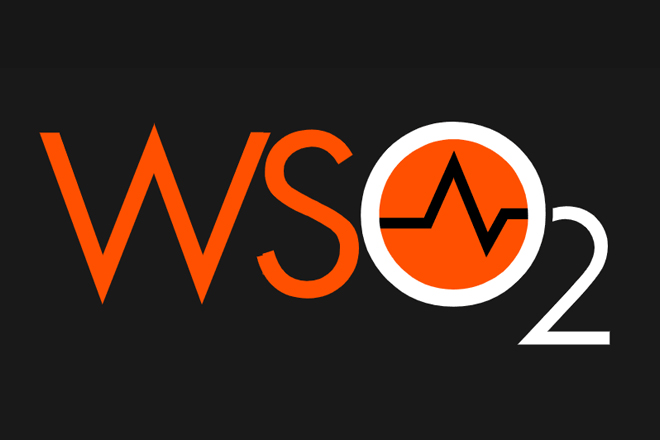
Prabath Siriwardena, Vice President and Deputy CTO – Security Architecture at WSO2 discusses some of the challenges, opportunities and points to note surrounding the current environment of CIAM implementation.
1) What does Customer Identity and Access Management mean?
Customer Identity and Access Management (CIAM) has become a bit of an overloaded term over time. There are multiple articles, blogs, analyst reports explaining what CIAM is and defining it in different ways.
The main objective of CIAM is to drive revenue growth by leveraging identity data to acquire and retain customers. It will build an identity-centric ecosystem to nurture an anonymous website visitor into a well-known loyal customer.
One popular definition of CIAM is that it is an IAM discipline for managing customer identities. Rather than calling CIAM, managing customer identities, I would like to call it customer-focused IAM.
Customer-focused IAM adds a lot of depth to the definition of IAM. For example, unlike traditional IAM, when you focus on customers, you probably start working with millions of impatient users, who get annoyed by filling lengthy forms, and cannot wait at least 2 seconds to log into a system. Even if there is a small glitch in your system, they will take it to social media and will make a big buzz. Moreover, even the slightest of leaked customer information could take a big slice of your share price down.
Yahoo!, for example, was in the middle of a series of data breaches a few years back, that exposed the personally identifiable information (PII) data of more than 1 billion users. This cost the company $350 million. They had to lower the sales price of its email and other digital services, which they sold to Verizon from $4.83 billion to $4.48 billion to account for the potential backlash from the data breaches.
Calling CIAM customer-focused IAM still does not add enough weight on how it can catalyze business growth. Unlike traditional IAM, a CIAM system should have the capability to integrate with customer relationship management (CRM) systems, marketing platforms, e-commerce platforms, content management systems (CMS), data management platforms, and many more. A customer-focused IAM system with no business integrations, adds little value in terms of business growth that we expect from having a CIAM solution.
So, with all these, I would define CIAM as a customer-focused IAM discipline that facilitates leveraging identity data with business data to catalyze business growth.
2) Why is it important to businesses?
Transforming the customer experience is at the heart of digital transformation. Digital technologies are changing the game of customer interactions, with new rules and possibilities that were unimaginable only a few years back.
CIAM is a whole emerging area in IAM, which is essentially an ingredient for building a better digital customer experience, as well as a tool to provide greater insights of the customer journey, that helps the businesses to make better-informed decisions.
So, CIAM is important for any business that interacts with customers. Over time, we have spoken to hundreds of WSO2 customers, and probably thousands of leads. From all those conversations, what we have learnt is, different businesses are at different levels of maturity in building a CIAM solution. Some even don’t know they are doing CIAM.
3) Where is this applicable?
CIAM is applicable across almost all verticals that interact with customers.
For example, COVID-19 has pushed a wide range of businesses that were not previously digitally driven, such as grocery stores and restaurants, to offer goods and services online. Such businesses are now forced to adopt digital strategies to survive and thrive.
However, this also opens up entirely new opportunities. Where these businesses once largely maintained transactional relationships with customers, they can now start to use knowledge about consumer identities to build customer profiles, new partnerships, and new services that drive longer-term and higher-value relationships for the business and the customer alike. This imperative will drive demand for high-performance, cost-effective CIAM solutions as businesses seek to focus on their core strengths rather than developing proprietary systems on their own.
4) What can you do with this technology?
CIAM is in fact not just about technology. It’s about how you can use or glue different systems together to build a better digital experience for the customers and generate better insights that help businesses to grow. That’s why we believe CIAM is a solution that you build rather than a product you buy.
How you use technology in CIAM differs from one business to another, or, in other words, different businesses are at different levels in the CIAM journey. This we call the CIAM maturity model.
Most businesses do start with level-0 maturity level, or Non-Existent. At this level you don’t worry about tracking any customer interactions. Probably you don’t have an online portal and probably you don’t do any sales online. In case you have an online portal, you may use it only to share your product and contact information — and would not expect any dynamic customer interactions. Probably you may use systems like Viber, WhatsApp, or a phone line to accept orders, but you don’t worry about tracking who places which order.
Many restaurants, taxi services, retail stores, and family businesses follow this model at the start. When you walk into a restaurant, no one knows about you, even if it’s the same restaurant you are going back again and again, each time, you need to pick where you want to be seated and what you want for the meal.
At level-1 — or the Managed Identity phase, you only worry about onboarding your customers to the system and digitally manage their identities. The businesses operating under level-1 maturity level have a varying level emphasis on how they want to manage their customer identities. One may only worry about onboarding customers via an online portal and then let them authenticate to the system via username and password. Another business would worry about integrating with social identity providers for registration, enabling strong authentication options with adaptive authentication, integrate with risk engines, do identity analytics, and so on
Level-2 is one step forward from the managed identity phase. Here you have an identity management system in place, and you also worry about having a CRM system, a marketing platform, an e-commerce platform, a content management system, a data management platform, and many more to know about your customers better. This does not necessarily mean that all the businesses in this maturity level have all these systems in place. Probably you start with a CRM system, and then gradually move into others.
One deficiency we see in the businesses in this phase is, even though they collect customer data at different contact points, the data sources are disconnected and do not help in building a unified profile for a given customer.
When you want to generate a report across multiple data sources, that would require a high labor-intensive process with human involvement. And even in some cases, you may fail to find a correlation among different data sources. This is in fact the phase we see a business would start worrying about a CIAM system. Once you are in this phase you’ll understand the benefits of building a unified view of a customer — and at the same time, you’ll start realizing the deficiencies in your current system that prevent you from getting there.
The level-3 is the connected phase. This is the phase where you start integrating your IAM system with your CRM system, marketing platform, e-commerce platform, content management system, data management platform, and many more. This helps in building a unified view of your customer. For example, you can see how long it took to nurture an anonymous lead to a loyal customer.
Finally, the level-4 or the optimized phase. Omnichannel access is a key feature we see in the businesses that operate at this level. In an omnichannel environment, the customers interact with the business via multiple channels, but will still get a seamless — continuous user experience. For example, if you use the Newsweek iPhone app to highlight some content, once you view the same from the web, you should find it still highlighted. Amazon in fact took the retail order placing system to the next level with Alexa. If you are an Amazon customer, you can place an order via its website, mobile app, Alexa, or via kindle. When Amazon announced Amazon Books, a few years back, their intention was to bring the same digital experience (from the web) to the physical world. If you visit an Amazon Bookstore, you will see the book reviews, ratings, and many other digital-only features there.
5) What role does CIAM play in today’s digital markets?
Among many other things, one lesson COVID-19 taught us is, being digital is not an alternative. As we discussed before, COVID-19 has pushed a wide range of businesses that were not previously digitally driven, such as grocery stores and restaurants, and many more to offer goods and services online. This also means digital markets are widening up as well as becoming more competitive. Thinking about a growing customer base in a highly competitive market, CIAM is not an alternative, but a must!
Prabath Siriwardena will feature as a panelist on the CIAM Roundtable Webinar hosted by WS02, covering the current state of CIAM applications, existing challenges, and innovative solutions to overcome them. The virtual roundtable will take place on the 17th of June 2021 and feature a panel consisting of distinguished multidisciplinary experts and senior management from the telecommunication and banking sectors. The roundtable will be live at 10 30 am IST and registration can be accessed at https://wso2.com/webinar/ciam-trend-chat-apac?utm_source=pr&utm_medium=link&utm_campaign=pr_link_ciam_trends_210601.

